Miso Butter
This miso butter recipe adds instant umami to your everyday cooking. Made with just two ingredients – butter and miso paste – this compound butter is delicious with salmon, vegetables, and white rice. Or, simply enjoy miso-buttered toast for breakfast!
Miso butter is the easiest way to add instant umami flavour to your everyday cooking. Once melted, it becomes an irresistible butter miso sauce – perfect for basting fish, mushrooms and vegetables, drizzling over white rice, or stirring into noodles and pasta. Or simply spread the golden miso butter on sourdough toast.
Best of all? Homemade miso butter is a quick and easy recipe that requires only two ingredients. And you can whip it up in no time.
Refrigerate it in an airtight container and add it to everything from scrambled eggs to roasted veggies.
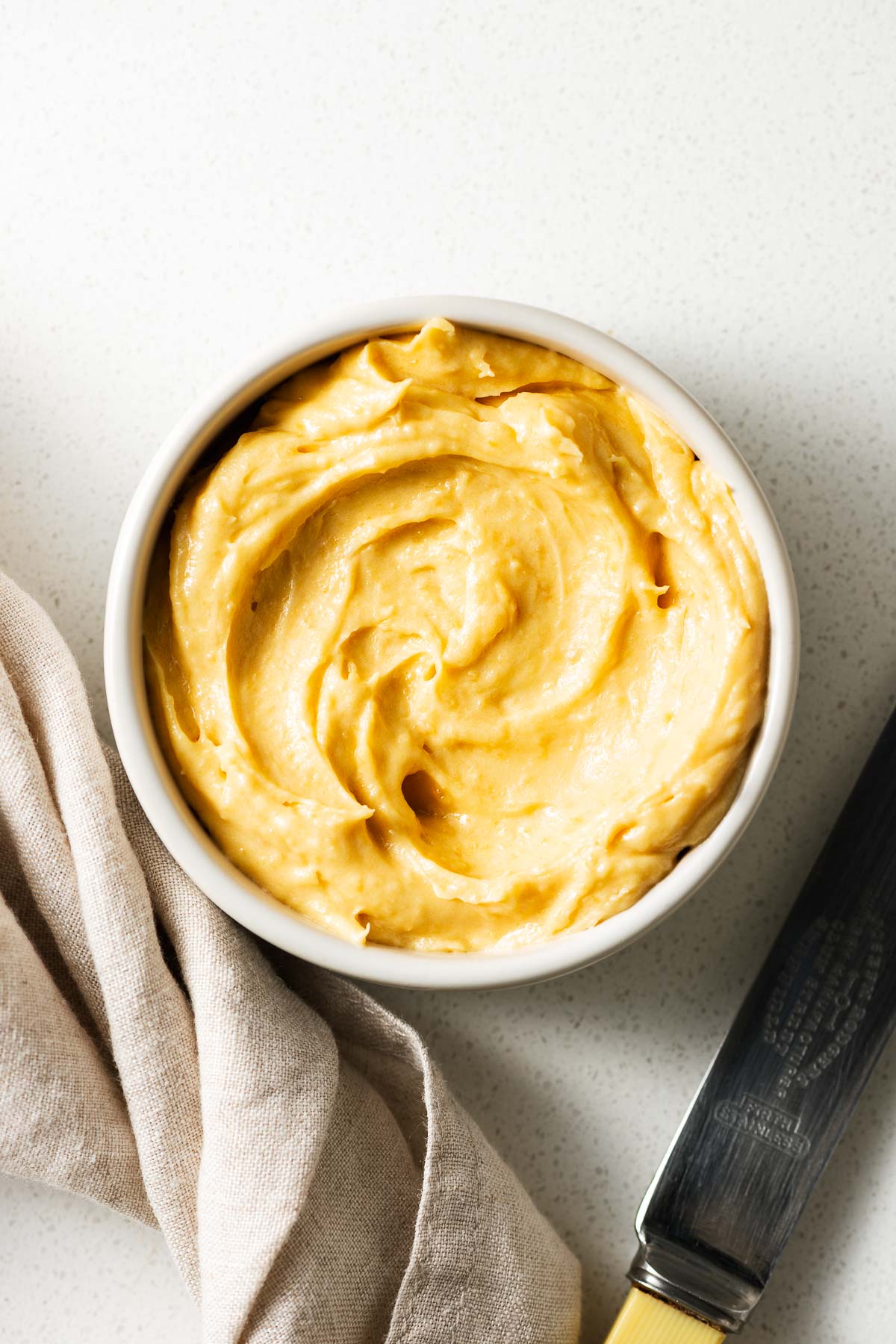
Why you’ll love miso butter
While you may not associate butter with Japanese cooking, miso and butter make a heavenly match.
Just look at the iconic Sapporo miso ramen from the Japanese island of Hokkaido. The noodles are served in a miso broth and topped with a generous slice of butter.
This miso butter recipe is a must-try for anyone who loves Japanese flavours as much as I do:
- It’s easy to make: The miso compound butter comes together in a few minutes with only two ingredients.
- It’s versatile: Use it as a condiment for grilled fish, roasted vegetables, and white rice. Or spread it on toasted sourdough for a delicious umami-packed miso butter toast.
- It’s delicious: The combination of creamy butter and salty miso paste creates a flavour that’s hard to beat.
What is miso paste?
It is a fermented product of soybeans and koji-inoculated grains (like barley or rice). Koji is the beneficial mould (Aspergillus oryzae) also used for sake, soy sauce and other fermented foods.
The mixture ferments for anything from a few weeks to several years.
And the ratio of fermented soybeans to grains, and the duration of fermentation, determines the flavour intensity of the miso paste.
Miso paste is a vital ingredient in Japanese cuisine and there are many different types of miso paste, including white miso (shiro miso), red miso (aka miso) and mixed miso paste (awase miso).
Learn more about how miso is made, the different types of miso and find the best substitutes for miso paste.
Ingredients and substitutes
Miso compound butter is a delicious and versatile flavouring agent. You need only two ingredients to create this creamy, savoury compound butter: unsalted butter and miso paste.
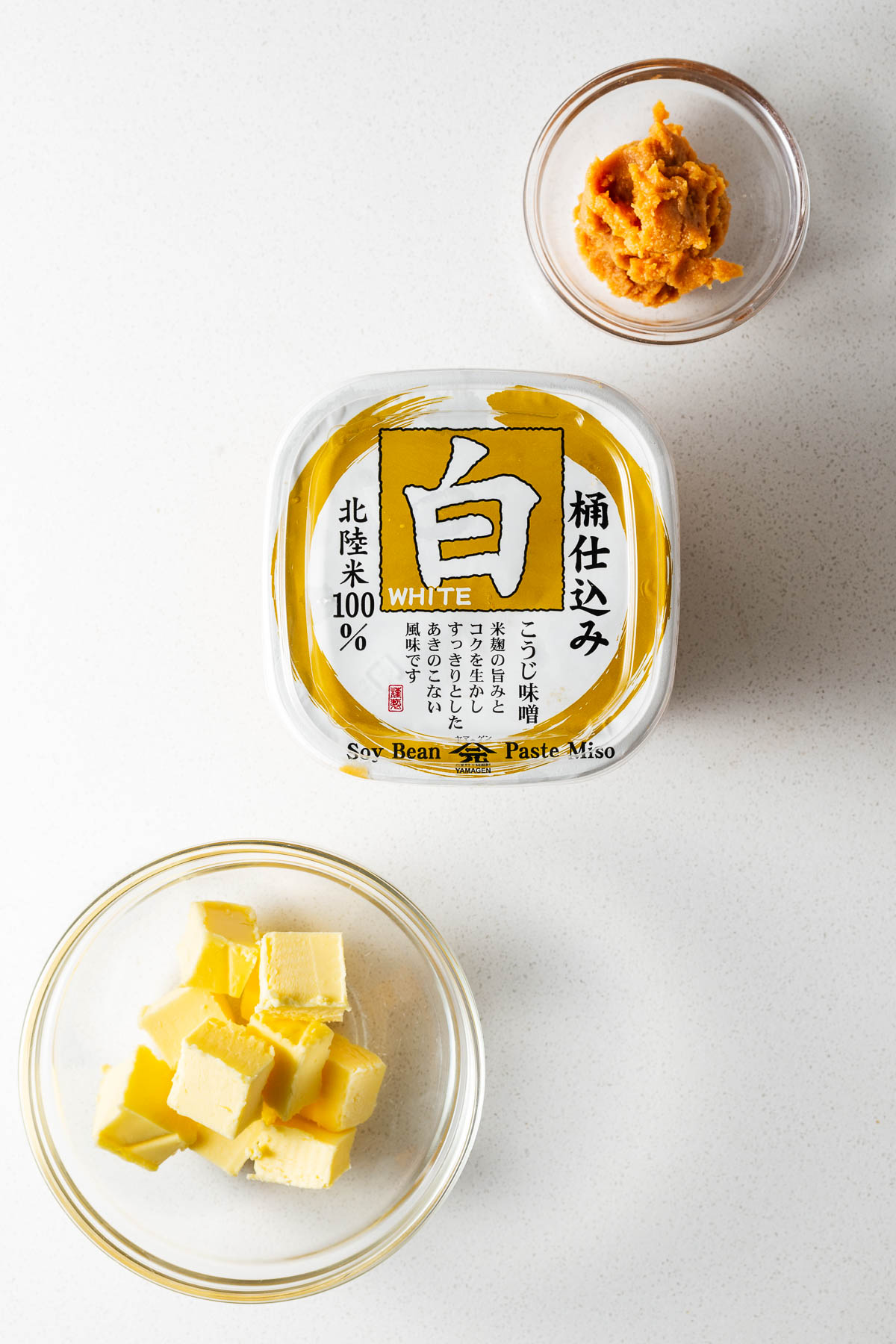
Miso paste
I use white miso paste. It is the mildest type of miso made with a shorter fermentation time. White miso is a great introduction to miso if you’re not used to the ingredient.
But you can also use red miso paste, mixed miso paste, or gluten-free miso paste. The darker types of miso are more intense and often saltier. So, don’t mix all of the dark miso in at once, rather add it gradually and adjust it to taste.
Unsalted butter
Miso paste is flavour-packed, sweet and intensely savoury (with darker miso paste often being saltier).
Using unsalted butter with white miso allows more control over the final flavour profile. But if all you have is salted butter, simply add the miso gradually and adjust it to taste to avoid overseasoning the compound miso butter.
I did not test this recipe with a plant-based butter alternative, but I don’t see any reason not to try it.
Easy miso butter variations
The two-ingredient miso butter is utterly delicious as is. But there is lots of room to play around with the flavours.
- Garlic miso butter: Mince a garlic clove, then pound it into a paste with a pestle and mortar. Mix it into the butter miso. This version is so, so, so good with mushrooms.
- Spicy miso butter: Add a pinch of togarashi, chilli flakes a teaspoon of sambal oelek, or add a generous grind of black pepper. I love this spicy compound butter version with roasted cauliflower. Try it in this roasted cauliflower recipe mixed with olive oil, instead of harissa butter marinade.
Let me know in the comments below how you spice up your homemade miso butter.
How to make miso butter (step-by-step)
It only takes two ingredients, two minutes and two steps to make a batch of miso compound butter.
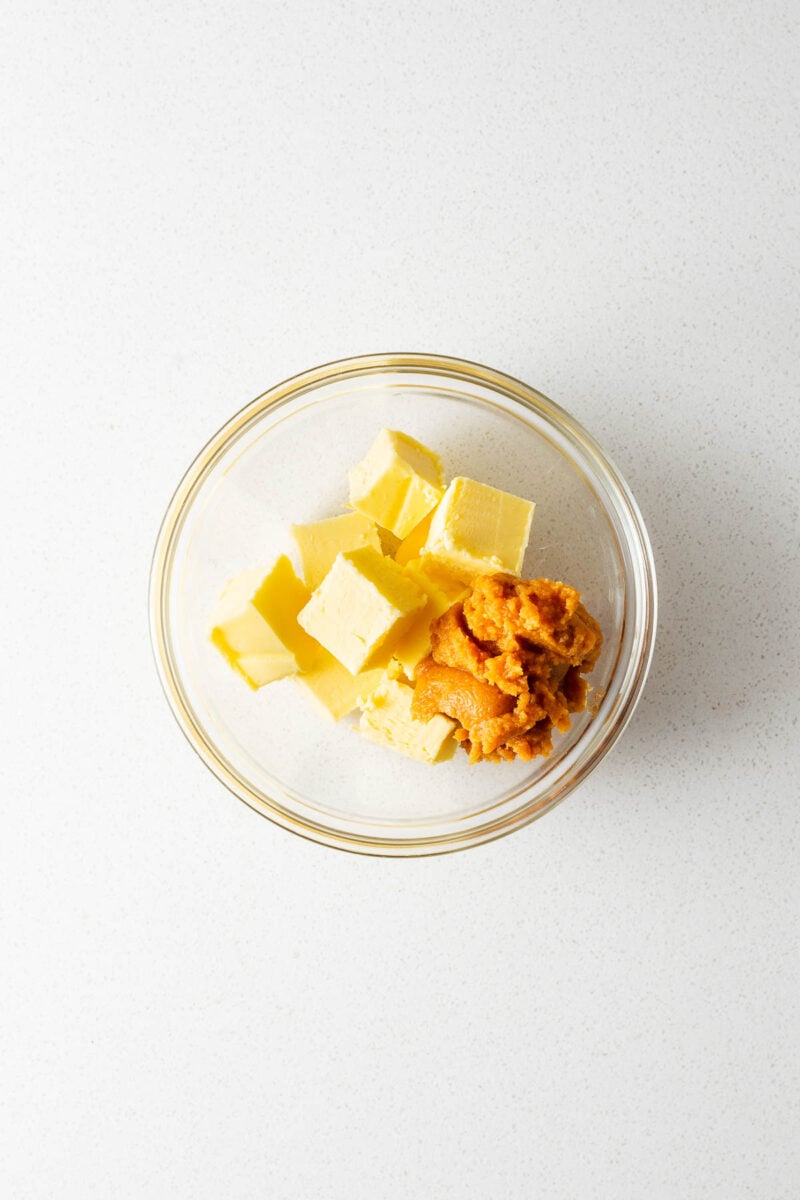
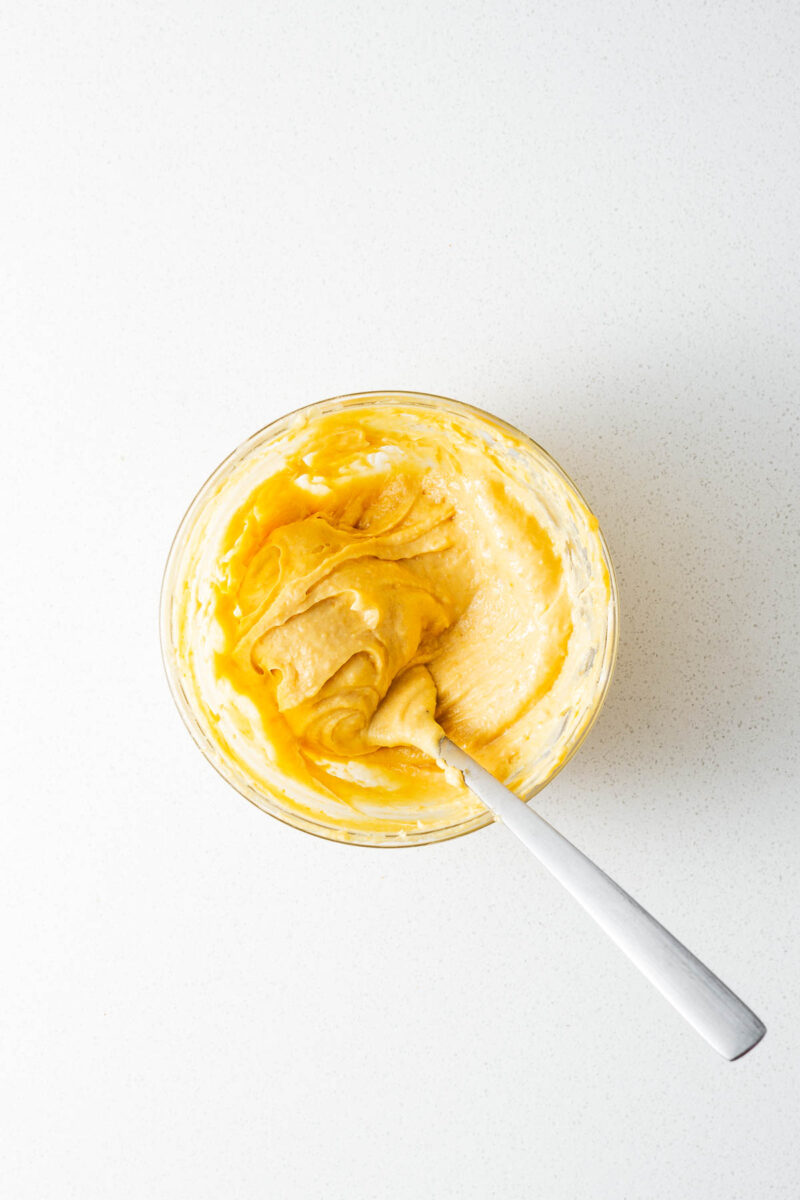
Step 1: Grab a small bowl. Add a quarter cup of unsalted butter at room temperature with two tablespoons of white miso paste.
If your butter is fridge-cold, heat your mixing bowl with boiling hot water. Dry it thoroughly, then mix the unsalted butter and white miso paste in the hot bold. I don’t recommend using the microwave for softened butter, there is a high risk of unintentionally melting the butter.
Step 2: Mash together the room-temperature butter and miso paste with a fork until the miso butter is silky smooth. If you need to soften the butter further, place your mixing bowl in a larger bowl with warm water for a few seconds. This should soften the butter without melting it.
Your miso butter is ready to use straight away.
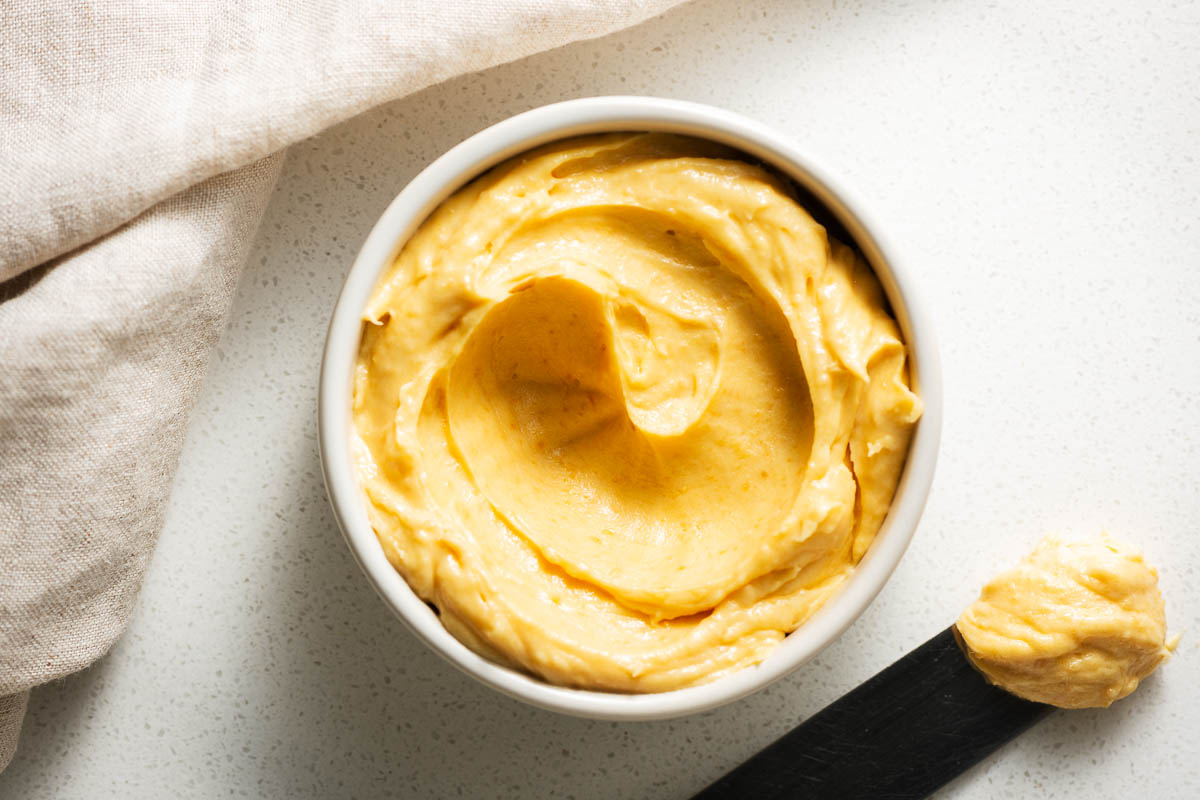
Storage instructions
Store miso butter in an airtight container. Refrigerate it for up to two weeks or until the expiry date of the butter, whichever comes first. You can also freeze the miso butter for up to three months.
To serve miso butter, you can roll it into a plastic-wrapped log and refrigerate it until you’re ready to slice it into discs. Or set the butter in cute silicone moulds to prettify things. See this harissa butter recipe for instructions.
Serving suggestions
Miso compound butter is an everyday umami-packed condiment. It is slightly tangy, a little bit sweet and super savoury. Use it as an alternative to plain butter (or garlic butter) to add instant flavour to your dishes.
Toast: Take your morning slice of sourdough to the next level with a generous spread of miso butter. It is utterly delicious topped with a boiled egg or sliced avocado.
Fish: Miso butter is the perfect condiment for fish. Melt a spoonful of miso butter over grilled fish and serve it with a squeeze of lemon juice. Or for miso butter salmon, bake salmon with miso butter wrapped in parchment paper (en papillote). The umami-rich flavour of the miso pairs beautifully with the delicate flavour of baked salmon.
Vegetables: Miso butter is also great with veggies – ready to add flavour to a variety of side dishes. Use it to roast or stir-fry your favourite vegetables, then sprinkle it with toasted sesame seeds. Or place a dollop of miso butter on steamed vegetables for instant indulgence. I love a generous serving of miso butter with roasted sweet potatoes topped with lime zest.
Rice: Miso butter is also the perfect condiment for white rice. It adds a savoury, umami flavour that pairs perfectly with steamed white rice. And even better if you top the rice with Japanese-style scrambled miso eggs. See how to make perfect instant pot sushi rice, or use the stovetop method for sushi rice.
Noodles: It’s also great for adding flavour to other dishes like miso soup, ramen noodles and even pasta dishes. Stir a knob of miso butter into gochujang udon noodles for an easy yet indulgent midweek meal.
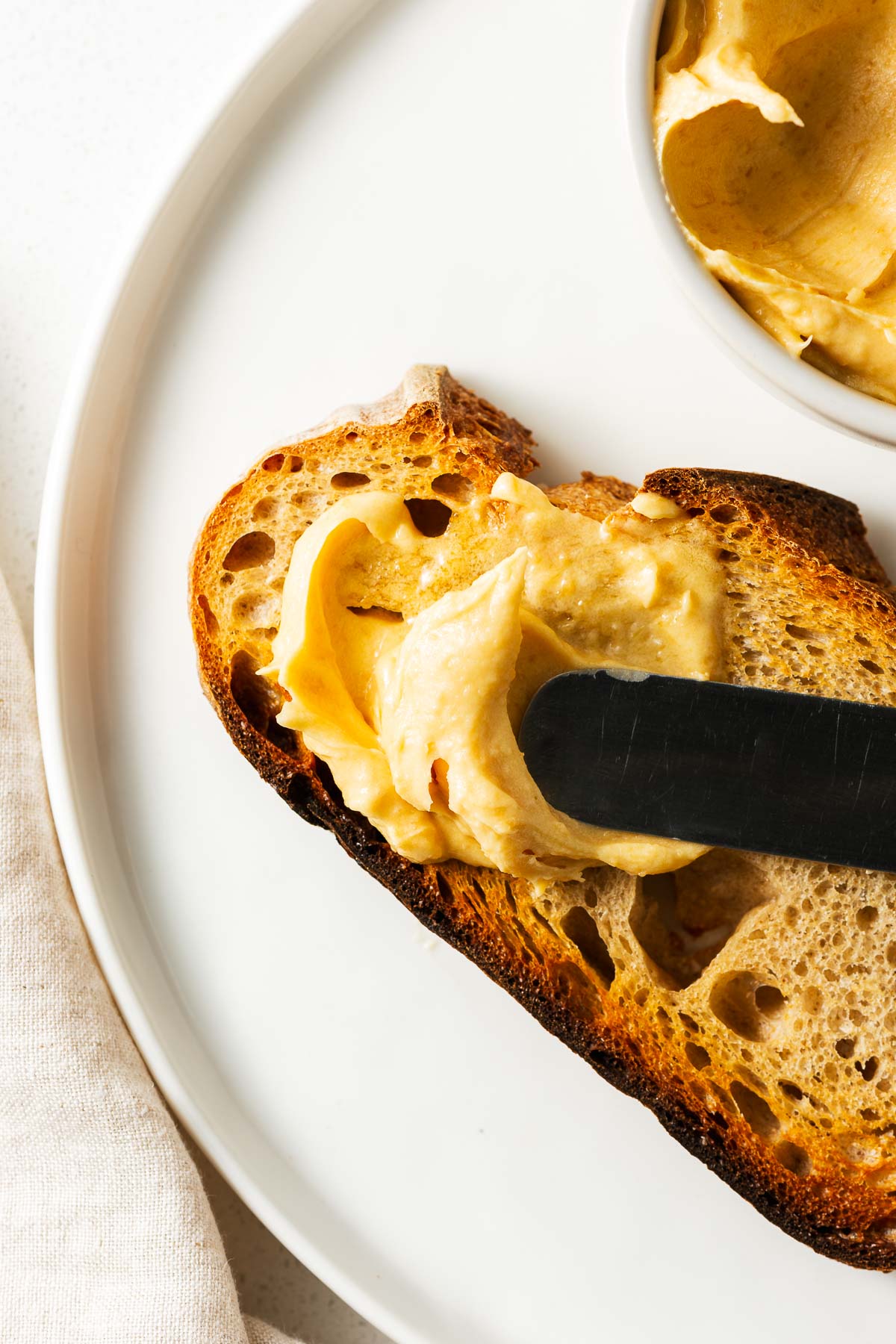
Miso butter is a versatile condiment that adds tonnes of flavour to any dish. So, don’t be afraid to experiment with it. And let me know how you use your miso butter in the comments below.

Ingredients
- ¼ cup unsalted butter , room temperature
- 2 tablespoons white miso paste
Instructions
- In a small bowl, mash the room-temperature butter and miso paste with a fork until well combined.
- Use the miso butter straight away. Or roll it into a plastic-wrapped log, and refrigerate or freeze until you’re ready to slice it into discs. You can also set the butter in silicone moulds.
Notes
- If your butter is fridge-cold, heat your mixing bowl with boiling hot water. Dry it thoroughly, then mix the unsalted butter and white miso paste in the warmed bowl. I don’t recommend using the microwave to soften butter, you don’t want melted butter!
- Refrigerate the miso butter in an airtight container for up to 2 weeks or until the butter expiry date, whichever comes first. Or freeze it for up to 3 months.
Try more Japanese-inspired recipes:
